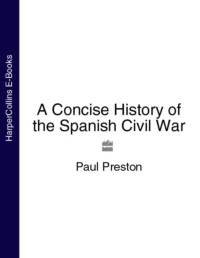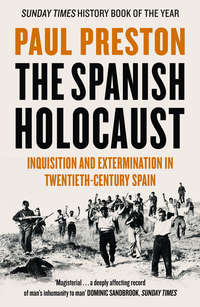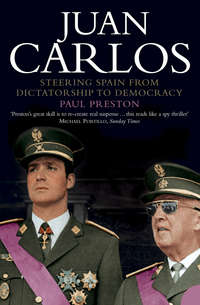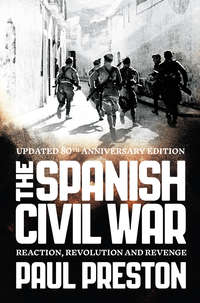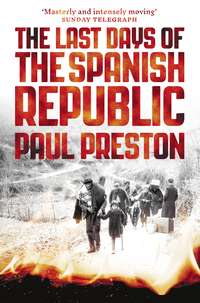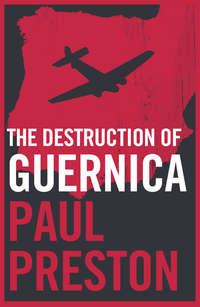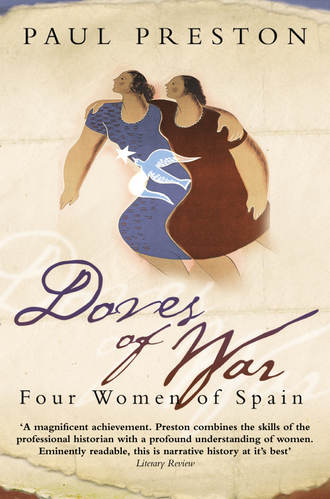
Полная версия
Doves of War: Four Women of Spain
Shortly after marrying Margot van Raalte, Tommy, anxious to keep a link with the Army, joined the Westminster Dragoons. Their first children, twin sister and brother, Bronwen and John Osmael, were born on 27 November 1912. When the First World War broke out, Tommy left for Egypt as second-in-command of his regiment. At the time Margot was pregnant with their third child, Elizabeth, who was born on 5 December 1914. At the first opportunity, however, she arranged to join Tommy in Egypt. As was commonplace among the upper classes at the time, Margot thought it normal to leave her three children with a nurse. At Chirk Castle, the family’s country seat near Llangollen in North Wales, they were neglected to the extent of contracting rickets.7 At first Margot was rather bored in Egypt but after Tommy volunteered to go with the British invasion forces to Gallipoli, and casualties began to arrive from Turkey, she joined a friend, Mary Herbert, the wife of Aubrey Herbert, a contemporary of Tommy’s at Eton, in setting up a hospital. One of the Herberts’ daughters, Gabriel, was also to work with Franco’s medical services during the Spanish Civil War; the other, Laura, was to be the second wife of the novelist Evelyn Waugh. At the end of 1915, Tommy was posted back to Egypt and Margot was able to live with him there until in May 1916, they returned to England. She was by then pregnant once more. In November 1916, Tommy got himself transferred to the Royal Welsh Fusiliers in order to serve in France. Two days after he left, Priscilla was born in London on 15 November 1916. The real sequence of events undermines Vilallonga’s accusation that her father was Prince Alfonso de Orléans Borbón.8 Margot and Tommy would have two further daughters, Gaenor, born on 2 June 1919 and Rosemary on 28 October 1922.
In later life, when she had become addicted to drama and excitement, Pip would attribute her taste for adventure to having been born during an air raid; more likely it was inherited from her parents. According to her brother, when she was a toddler, the family called her ‘Chatterbox’. Ensconced in her high chair, she would chunter away irrespective of anyone listening or understanding. As a child, she used her Welsh name of Esyllt (the equivalent of Iseult or Isolde). However, she quickly became irritated when people twisted this to Ethel, so she switched to Priscilla, which in turn became reduced to Pip. Her mother remembered how useful she always made herself with her younger sisters: Rosemary was a rascal, ‘Pip alone could manage her with loving ease.’ Pip was an affectionate child, always desperate to please and to be liked – and thus hurt by the coldness of her parents. Gaenor recalled that Pip was ‘a very pretty girl with golden curls and blue eyes, and bitterly resented the disappearance of the curls and her entry into the comparative drabness of schoolroom life’. She was brought up in the splendour of Seaford House in Belgrave Square until she was nine, attending a London day school – Queen’s College in Harley Street. While still a child in London, she suffered a distressing riding accident in Rotten Row in Hyde Park. She was thrown from her horse and when her foot was caught in a stirrup she was dragged some distance. She was nervous about riding for a while but, according to her sister, ‘she grew up to become an extremely brave horsewoman, and to show courage in all sorts of difficult and dangerous situations’.9
Withal, it was a privileged existence. Margot was concerned that her children be independent and resourceful which was difficult given the legions of servants whose job it was to make life easy for the family. With a great imaginative leap, considering her own station in life, Margot supposed that ‘some, if not all, of the girls might have to cope and ‘‘manage’’ in later life’. To create a contrast with the world of housemaids who cleared up books and toys and grooms who saddled and rubbed down horses and ponies, a little house was built at Chirk called the Lake Hut. There, the girls made do on their own, cooking, washing-up, and looking after themselves. Pip took to this very well. When their parents took the children on trips on their sixty-foot motor launch, Etheldreda, Pip and Gaenor would do the cooking. In her mother’s recollection, ‘when it was rough it was Pip who managed to produce food for us all. She was gallant and highly efficient at ten and twelve years old.’ Holidays at Brownsea were enlivened by days camping at nearby Furzy Island. Indeed, Chirk, Brownsea and Furzy provided the basis of blissful fun for the children. They had considerable independence to wander the fields, the woods and streams. When they were required for meals, if Margot was present, she would unleash the power of her soprano in Brünnhilde’s call from Die Walküre and they would come scampering home.10
All in all, there were idyllic elements but there remains a question mark about the impact on the children of the lengthy separations from both Margot and Tommy. The Scott-Ellis girls saw relatively little of their parents, particularly of their father. When they did, emotional warmth was in short supply. Tommy and Margot were, according to their son, incapable of showing emotion. They both seemed totally remote, capable of impersonal kindness but not of understanding. Pip’s cousin Charmian van Raalte, who was brought up with the Scott-Ellis girls, having been abandoned by her own mother, recalled that ‘neither Tommy nor Margot ever showed a grain of affection to any of the children’. Indeed, when Thomas Howard de Walden returned from France, where he had fought in the mass slaughter of Passchendaele, he was dourly taciturn, in shock from the shelling and the butchery. In his own description, part of him had died in the war and the part that survived was ‘no more than a husk, living out a life that he finds infinitely wearisome’.11 However, on the rare occasions when their parents did acknowledge the existence of the children, they seemed, fleetingly, to have fun together. Lord Howard de Walden had a burning interest in the theatre as well as being a musician of some talent. At Chirk, he would often delight guests with his playing in the music room. He wrote the libretto for three operas by Joseph Holbrooke. He ran the Haymarket Theatre for several years. He often organised theatrical events involving his children and their friends, writing six plays for them. With professionally produced costumes and scenery, these were exciting enterprises. In one, a part was taken by Brian Johnston, later famous as a broadcaster. Moreover, baskets of costumes from old productions at the Haymarket, with armour and helmets, ended up in the family home, swelled the dressing-up basket and transformed many childhood games.
Although he seemed always to have more of a bond with Pip, Tommy did not, in general, have much time for girls. He once wrote of his granddaughters: ‘The girls are alright but they are girls and there is no more to be said about that.’ He rarely spoke to his daughters and Pip was the only one not to regard him as a complete stranger. His conversation was too erudite and dismissive, his interests too varied. When in England, Tommy and Margot had an astonishing array of friends and acquaintances that included G. K. Chesterton, Hilaire Belloc, George Bernard Shaw, Diaghilev, Augustus John, Jacob Epstein, Thomas Beecham, Rudyard Kipling, Cole Porter, Ivor Novello, Alicia Markova, Arturo Toscanini, Richard Tauber, James Barrie, P. G. Wodehouse, Arthur Rubinstein and Somerset Maugham. He was President of the London Symphony Orchestra. In Wales, he was an especially generous patron of the arts and was made a Bard at the Eisteddfod. With his wife, he shared a passion for opera and they had their own box at Covent Garden.12
Tommy was a major expert in medieval weaponry and heraldry about which he wrote a number of important reference works. He even had his own suit of armour made in order to assess the difficulty of swordplay. On one occasion, the painter Augustus John, while staying at Chirk Castle, was quite taken aback to find his host reading The Times, dressed in a suit of armour. The reason for this eccentricity was that Lord Howard de Walden wished to ascertain how easily an armour-clad man could get up from a prostrate position. To avoid spending hours helplessly trapped on the floor, he was awaiting a companion before beginning the experiment. Tommy was deeply interested in falconry and regularly went hawking. He had farming interests in East Africa including a coffee farm in Kenya and he was often away for long periods on safari. In 1926, however, he took Pip with him for several months. Her bravery during brushes with wild animals in Kenya reinforced his pride in her. She would later describe to Gaenor her terror on the walk in the dark to the outside lavatory. On another occasion, he took her on a lengthy sailing trip to the north of Scotland. In contrast, Margot got on less well with Pip because, as her sister recalled, they were so alike in their energy, practicality and impetuousness that they irritated each other.13
While Margot and Tommy enjoyed the London season or were travelling abroad, Pip, Bronwen, Elizabeth and Gaenor spent much of their childhood in the grandeur of Chirk Castle. Chirk had been an old border castle on Offa’s Dyke. There, they were educated by a series of governesses, usually two at a time. The life in the castle fed Pip’s taste for adventure. An ancient castle full of armour and swords and shields inspired games of make-believe involving knights and dragons, fairies and damsels in distress. The fact of having ponies and vast tracts of Welsh hillside on which to roam also encouraged her imagination. The governesses were easily typecast as ogres and giants. These different women each had to stand in for the girls’ frequently absent mother whose social commitments were extraordinarily time-consuming. Moreover, their regular replacement added an element of insecurity into Pip’s early life. At least she had avoided the worst childhood wounds of the repeated separations of boarding school. Only in early 1932 when she was fifteen, and Gaenor twelve, was Pip – to her delight – sent away to Benenden.14 Pip was a sensitive girl and the consequence of this upbringing was that, for all the protection provided by money and class, not to mention her indisputable bravery, she was always rather insecure and eager to please. She could be easily humiliated by the verbal cruelty, or simple thoughtlessness, of others. Nevertheless, as her voluminous diaries show, she was an indefatigable optimist. Her brother remembered her as always ‘of a cheerful and jolly disposition’.15
The patrician atmosphere in which Pip was brought up was characterised by a degree of paternalism towards the less privileged. Both Tommy and Margot were active patrons of hospitals. Tommy, however, was, outside the arts, a considerable snob. He once reprimanded Margot after a visit by the Prime Minister, the Conservative Stanley Baldwin, and his wife. Tommy commented to Margot: ‘You really should not ask those sort of people.’ That was an indication of his snobbery rather than of his political orientation which was inevitably very right-wing. In early May 1926, during the nine days of the General Strike, the ballroom of Seaford House was home to about two hundred undergraduates from Oxford and Cambridge who had volunteered to join a special police force. Effectively, they were engaged in strikebreaking. From 4 to 12 May, for twenty-four hours every day, they were on call. Telephoned news of a demonstration or clashes with pickets would see lorry engines roar to life. The enthusiastic scions of middle-class families, armed with truncheons and well fed by Margot’s caterers, would set off for some sport.16 Similar attitudes underlay Pip’s later involvement in the Spanish Civil War.
In 1932, during holidays from Benenden, Pip had learned to fly in a Gypsy Moth bought by her mother. Nervous because Pip was already showing signs of the wanderlust that would characterise her later life, Margot prevented her taking her pilot’s certificate.17 She remained at Benenden for a year and two terms before going on to a finishing school in Paris in the autumn of 1933. When Pip left Paris in early 1934, her already good French was much improved. After skiing at Mürren in Switzerland, she spent time with an Austrian aristocratic – and anti-Nazi – family, the Harrachs, in Munich. In 1931, before going up to Oxford, John had gone to Munich to learn German. On his first day, driving his car, he ran over a man who turned out to be Adolf Hitler. The future Führer was, unfortunately, unhurt. Shortly afterwards John met, and fell in love with Irene ‘Nucci’ Harrach and in 1934, they were married. Elizabeth, Pip, Gaenor and Rosemary were all bridesmaids at the wedding.18 Pip’s first interest in boys was focused on a handsome young flyer called William Rhodes Moorhouse. They went out together a few times but her adolescent crush on him was not reciprocated. In any case, Pip was about to become involved in a relationship with the Orléans Borbón family that would erase thoughts of William and dramatically affect the remainder of her life.
Alfonso de Orléans, who had established a friendship with Margot van Raalte during the summers that they spent at Brownsea, was married to a beautiful German princess, Beatrice Saxe-Coburg-Gotha, a granddaughter of Queen Victoria. Prince Ali, as he was known in the family, was an intrepid aviator and also a cousin of the King of Spain, Alfonso XIII. His wife was a cousin of Alfonso XIII’s consort, Queen Victoria Eugenia. Prince Ali was a fitness fanatic and an enthusiastic military man who was determined to prove that being of royal blood imposed an iron duty to be useful to his country.19 From 1909 until 1914, and then again from 1917, he and Princess Bea – as the family knew her – spent their summers at Brownsea Island with the Van Raalte family. After Margot married Tommy Scott-Ellis, the children of the Orléans and the Scott-Ellis families spent summers together at Brownsea.20 Prince Ali and Princess Bea had three sons, Álvaro (b. Coburg, 1910), Alfonso (b. Madrid, 28 May 1912) – known always as Alonso to distinguish him from the several other Alfonsos in the Royal Family, and Ataúlfo (b. Madrid, 1913). When in Spain in 1924, they lived in their palace at Sanlúcar de Barrameda, in the province of Cádiz. The Palacio de Montpensier consisted of three different buildings combined in the mid-nineteenth century into a pseudo-Moorish palace. About half a mile away, the family also had a huge English garden called ‘El Botánico’ within which there were two houses.21 Alfredo Kindelán, the head of the Spanish air force and a close friend of Alfonso de Orléans, was a frequent visitor.
After the flight of Alfonso XIII on 14 April 1931, Alfonso de Orléans Borbón regarded it as his duty to resign his commission and accompany the King on his painful journey from Madrid, via Cartagena, into exile in France.22 Prince Ali’s properties having been confiscated by the Republican Government, his family settled in Switzerland. He reconciled himself to living on his wits – and his not inconsiderable talents as an aeronautical engineer and a linguist (he spoke fluent English, French, German and Italian as well as Spanish). For Alfonso de Orléans, it was always a matter of principle to demonstrate that royal personages were not all effete and useless. Energetic and resourceful, remembering that he had once met Henry Ford, he wrote and asked him for a job. While awaiting a reply, he worked sweeping up in bars. The American magnate replied quickly and instructed him to report for work at the Ford factory at Asnière, outside Paris. He did so first as a cleaner, then as a salesman. Then he was soon transferred to the Ford headquarters at Dagenham in England where he worked variously, under the pseudonym Mr Dorleans, in stock control, accountancy and public relations. Within four years, his dynamism and initiative saw him made director of the company’s European operations. Princess Bea had moved from Zurich to London and kept in close touch with the Howard de Walden family. During this time, the Howard de Waldens commissioned Augustus John – who had set himself up as a kind of artist-in-residence at Chirk – to paint a portrait of Princess Bea.23
Pip had inherited from her mother a passion for the opera although her own violin studies had not borne great fruit. Wherever she went, she was always accompanied by a gramophone and a box of records. That Pip was a cultured and witty girl is amply illustrated by her diary. The extant part dates back to August 1934. She describes a stay in Salzburg with her mother and her sisters Gaenor and Elizabeth who, at the time, was being wooed by the great cellist Grigor Piatigorski. There Pip revelled in a performance of Don Giovanni conducted by Bruno Walter in which the Don was sung in Italian by Ezio Pinza. She was also entranced by the playing of Piatigorski when he serenaded Elizabeth. The family was en route to Munich for the wedding of Pip’s brother John to Nucci Harrach.24 In 1934, Princess Bea and her son Prince Ataúlfo stayed at Seaford House when they came over for the marriage of the Duke of Kent to Princess Marina. Pip also made her début in 1934. It was probably at this time that she began to notice Ataúlfo – or Touffles as he was known in the family, seeing him not as the child with whom she had played at Brownsea but as a charming young man. Both Gaenor and Pip’s cousin Charmian van Raalte recalled Ataúlfo as ‘definitely not goodlooking’. He had a round and podgy face but women liked him for his gentle manner and his amusing conversation. He played the piano and danced with extraordinary delicacy. If to some this denoted effeminacy, Pip did not notice.25 At this time, Pip was gawky and unattractive. She was worried about her weight – nearing thirteen stones (83 kilos). A photograph of her at a ball in May 1935 shows her looking frumpy, nervous and ill-at-ease.
When the military rebellion of 18 July 1936 precipitated the Spanish Civil War, Prince Alfonso de Orléans Borbón was in Bucharest on Ford business. He hastened to Burgos where he arrived on 2 August 1936. He offered his own and his sons’ services as pilots and was bitterly disappointed to be told that General Mola wished to avoid the uprising having a monarchist character. He was ordered to leave Spain. He then wrote to his friend, General Alfredo Kindelán, who had been named head of the rebel air force, and to Franco himself, pointing out that his two elder sons, Álvaro and Alfonso Orléans y Coburgo, had earned pilots’ licences in England in the Officers’ Training Corps. In consequence, at the beginning of November, they were able to join the Nationalist forces. However, Franco considered that Prince Ali himself was more useful to his cause in London. There he was able to facilitate the delivery of Ford trucks to the Nationalists. Moreover, Princess Bea was carrying on effective propaganda on behalf of Franco in establishment circles in Britain. She was also raising significant sums of money for food and hospital supplies for the Nationalist cause. Alfonso Orléans y Coburgo was killed on 18 November 1936. Flying as observer, his Italian Romeo Ro37bis biplane crashed while flying from Seville to Talavera de la Reina. The aircraft flew into a mountain at Ventas de Culebrín near Monesterio in the south of the province of Badajoz. In consequence, his younger brother Ataúlfo immediately volunteered.26 Pip was devastated when, at a dance in New York in January 1937, she had been told of Alonso’s death.27
In November 1936, Pip had sailed with her father for New York to stay with friends, a Mrs Wagner and her daughter Peggy. The trip would expand her horizons considerably. ‘I wonder what this year will bring me. I have a feeling lots. I hope so. I do wish Touffles would write.’28 He was constantly on her mind. ‘Last night’, she wrote on 3 January 1937, ‘I dreamed Touffles was terribly ill and all tied up in bandages and as white as a sheet. Oh dear oh dear. I wish he was not out in Spain in the war. God how foul wars are. Every time I think of Alonso it makes me feel sick and think of the cruel futility of it all. What a mess human nature is.’ The ‘divine’ Tyrone Power in a movie reminded her of Touffles. ‘I don’t suppose even if Touffles gets back from Spain alright he would ever want to marry an unattractive fool like me so I might as well stop wishing.’ Letters from him merely left her miserable and worried.29 She wrote on 22 January, ‘I have put my new photo of Touffles up on my bed table and simply adore it. I am silly to let myself go on pretending he might love me one day because I know he won’t but I can’t stop myself being nuts over him so I might as well enjoy it as much as I can.’ New York was a regular round of cinema, theatre and nightclubs, punctuated by having her fortune told at the Gypsy Tearooms. As always, she maintained her interest in music, attending a concert by the violinist Josef Szigeti. Among several historic performances at the New York Metropolitan, she attended Rigoletto with Lawrence Tibbett in the title role, Die Walküre with Kirsten Flagstad and Lauritz Melchior, and Saint-Saëns’ Samson et Dalila with Gertrud Wettergren, as well as a Cavalleria Rusticana and Le Coq d’Or.30 Nevertheless, she was restless. ‘Life here is so idle and pointless that I am pining to have some work or something to occupy me. We just do nothing.’ She managed to persuade the Wagners that she had to leave in case Touffles returned from Spain.31 While waiting for her passage home, she worried about her weight, and danced and flirted with an eligible young Cuban called Alvaro García.
Her passion for Touffles was boosted by the flirtation with García whom she had met at the Wagners’ home in New York. On 26 January 1937, the twenty-year-old Pip wrote in her diary:
I am so shocked at myself by my behaviour tonight and so bewildered by it all that I don’t even know if I enjoyed it. I went out with Alvaro to a Cuban place where we danced mambas (sic) until 4 o’clock in the morning. He dances divinely and it was grand fun. He made violent love to me the whole time and kissed me and I kissed him in the taxi home. But then he saw me up to the apartment and made such passionate love to me I was scared stiff. He even pulled down my dress and kissed my bosom which horrified me but I could not stop him. He did everything under the sun and I let him. I am certainly gaining experience but I don’t know if I like it.
By the next day, reflecting on the incident, she wrote: ‘The trouble with my flirtation is that all it has done is to wake me up and make me want Touffles to make love to me even more than I did before. Oh hell and damnation.’32 ‘Make love’, of course, meant rather less then, as this passage illustrates, than it does now.
Day after day, she wrote of missing Touffles. On 2 February, she wrote perceptively: ‘I think the trouble with all of us is our age and suppressed sex. I would like to have a hectic affair with someone but of course never will.’ The next night, however, she came very near. After a cocktail party and dancing into the early hours, ‘Alvaro took me home and came into the apartment where he made love to me on the sofa too divinely for words. It was heaven and again I behaved outrageously and let him do even worse things than before.’ She refused to have sex with him and was amused by the fact that he clearly believed her to be much more experienced than was actually the case.33
On her return passage on the SS Paris, she wrote: ‘I hate to be all alone, I feel scared and depressed.’ Her essential insecurity was revealed in other diary entries. ‘Everyone on board is sweet to me and they all seem to like me so much. It is so lovely to know people like you. If only I have changed enough to make Touffles like me too.’ The round of cocktail parties and dancing terminated on the last night on board in a dramatic encounter with a French diplomat. ‘God knows why but this evening I went off the rails and was mildly raped. I can’t think why I let Mr Brugere do such a thing, I must have been crazy.’ Having been assaulted by the man on deck, she later went to his cabin, ‘so now I don’t know whether I am still a virgin or not. I think not. It was heavenly but frightening.’ She left his cabin ‘feeling very ashamed and yet all excited and happy in a way’. The event seemed to unleash a hitherto repressed passion. After a ‘hot’ encounter in a taxi with a film director ‘Frenche’ whom she met on the ship from New York, she wrote: ‘I seem to have become so damn oversexed that I just can’t stop myself. I don’t know whether it is suppressed sex bursting forth or my thyroid pills or what, but the effect is incredible for the erstwhile priggish me.’ On returning to Chirk, she took up riding with a vengeance. She started to dream about Touffles again. Life in London was an endless kaleidoscopic social round in which she occasionally bumped into ‘that filthy fucking Frenche’. She took singing and piano lessons, fenced most days, regularly went to the theatre and the cinema, often visited the hairdresser and fashion shows and consulted more fortune-tellers. Despite her sexual progress, she was still young enough to sit with friends and be scared by talk of ghosts.34


